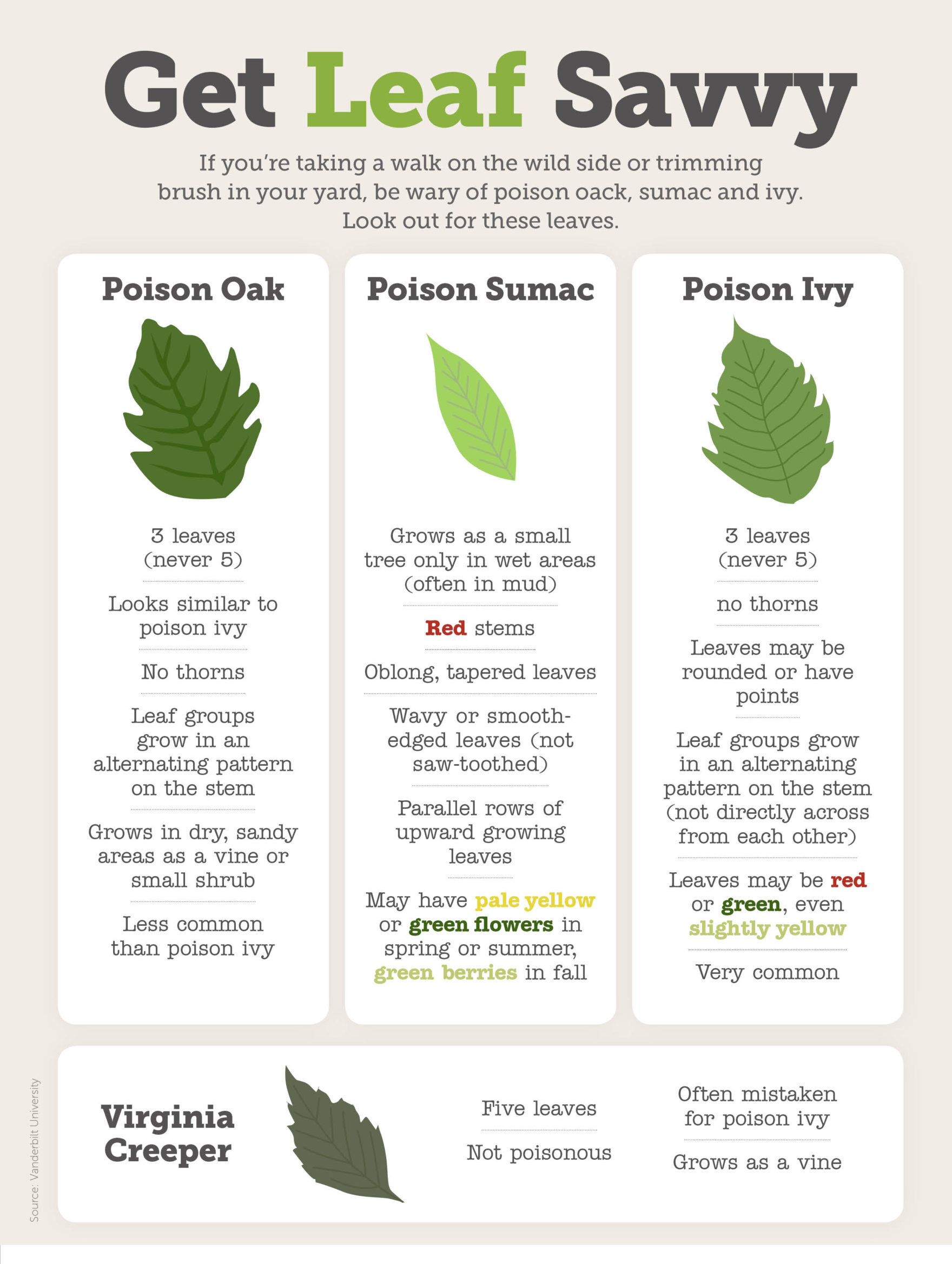Everyone loves outdoor fun, but sometimes it can lead to less enjoyable things, like poison ivy.
Poison ivy is caused by an allergic reaction to an oil resin (urushiol) in the leaves, stems and roots of poison ivy, poison oak and poison sumac plants. Be sure to familiarize yourself with these plants’ appearance before heading to your next camping, hiking or backyard adventure!
Symptoms of poison ivy rash (contact dermatitis) include redness, itching, swelling and blisters. The severity and appearance of the rash vary depending on the amount and method of urushiol exposure. A linear rash typically indicates direct contact with the plant, whereas a spread-out rash suggests transmission from touching contaminated clothing or pet fur.
Contrary to popular belief, the poison ivy rash is only contagious if the plant resin, urushiol oil, remains on a person or object, not through touching or itching a rash. If the rash appears to spread over time, it is because different parts of the body absorb urushiol at different rates or it is spreading through contaminated objects or clothing. If contaminated objects such as clothing, tools, equipment or a pet’s fur are not properly cleaned, urushiol can remain active and cause a skin reaction up to five years later. The reaction develops 12 to 48 hours after exposure to urushiol and may last two to three weeks. For people with first-time exposure, the rash may take up to 7-10 days to develop.
Seek medical attention if the reaction is severe or widespread, if swelling persists, if the rash affects your eyes, mouth or genitals, if blisters ooze pus, if you experience a fever greater than 100° F, or if the rash doesn’t improve within a few weeks. If you’ve inhaled the smoke from burning poison ivy, you may experience difficulty breathing and should seek emergency medical attention.
If exposed to these poisonous plants, immediately wash or clean the skin with isopropyl alcohol followed by warm soapy water. The faster the skin is cleaned after direct contact, the better; as cleaning may not be effective if more than 30 minutes have passed, but may still help halt the spread or severity of the rash. Once the skin is clean, use gloves to wipe off any contaminated objects with alcohol followed by water, and wash clothes in hot water with detergent.
Treatments and home remedies:
- Oral or topical antihistamines
- Over-the-counter hydrocortisone
- Topic anesthetics such as benzocaine, menthol or pramoxine
- Cool water bath with a half cup of baking soda or oatmeal-based bath products
- Cool, wet compresses several times a day
- Aloe vera
- Witch hazel
- Apple cider vinegar
If you have a severe and persistent poison ivy rash, we can help. Find a convenient urgent care location near you or use Hold My Spot®
Texas Department of Insurance, Vanderbilt Health, Mayo Clinic, Healthline

